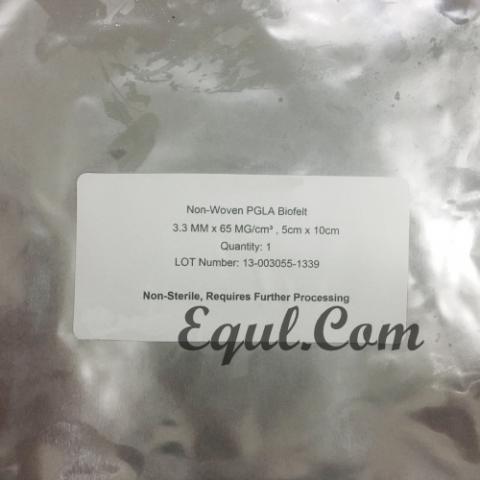商品描述
Biodegradable Scaffolds

Polymer Scaffolds for Tissue Engineering
Tissue loss is one of the most common problems in human healthcare. Tissue Engineering has been defined as "The use of naturally occurring and/or synthetic materials in conjunction with cells to create biologic substitutes to serve as functional tissue replacements."
In the late 1980's researchers developed porous PGA polymer scaffolds that enabled scientists to grow thick (1 mm and greater) layers of tissue. Since then, a number of functional tissue equivalents have been grown in the laboratory including skin, cartilage, tendon, bone, blood vessels, bowel, bladder and liver. Scaffolds fabricated from PGA have proven useful for growing three-dimensional tissue equivalents in vitro. Small-diameter fibers of PGA or PLA are randomly entangled to form a strong, flexible and porous three-dimensional matrix.
The scaffold allows cells to attach and grow in a three dimensional space while nutrient flow is maintained throughout the matrix.
Non-aligned scaffolds
Non-aligned scaffolds are fabricated from spun fibers using a non-woven textile process and resemble felt. Further modifications of the basic scaffold material can be conducted in the laboratory to enhance cell attachment and growth or to modify the physical properties and resorption rate of the non-aligned scaffold. The scaffolds are supplied non-sterile. Custom scaffolds made from polylactide (PLLA), PGA/PLLA copolymers and other synthetic resorbable polymers are available upon request.

